I have had the great fortune of working with and observing a few 100 MSP owners, and there is a common trait in the majority of them – They like to chase shiny things! In this article I want to talk about why this is, how this is affecting your business and people around, and some techniques on how to turn it into a super power.
Now, when I am talking about shiny things, I am not talking about getting distracted and procrastinating on LinkedIn so you can avoid doing simple tasks. When I am talking shiny things, I am talking about chasing the next idea, the new initiative, that new opportunity.
To me there is a big difference, the first issue is a time management and self-discipline issue, whereas the latter is thinking and long term focus problem. This definition really helps us drill into what we are trying to solve so we can grow and get better results.
There is a reason many of us small business owners suffer from the problem of lots of ideas and shifting focus, and it’s not because that is what our business requires. Its because we have this inbuilt in our DNA! You aren’t going to be crazy enough to start a small business if you don’t have thought patterns where you can see opportunity, decide on new initiatives by gut feel and come up with ideas.
To further demonstrate how we think, the Thinking Wavelength concept develop by Tom Paterson from The Paterson Center is an excellent way of visualising on a spectrum the different ways people think.
As you can see in the image below, the spectrum goes from highly concrete thinking on the left to extremely abstract and theoretical thinking on the far right. These are then broken into 5 types of thinkers on the scale, I will explore and explain this deeper in another article in the future.
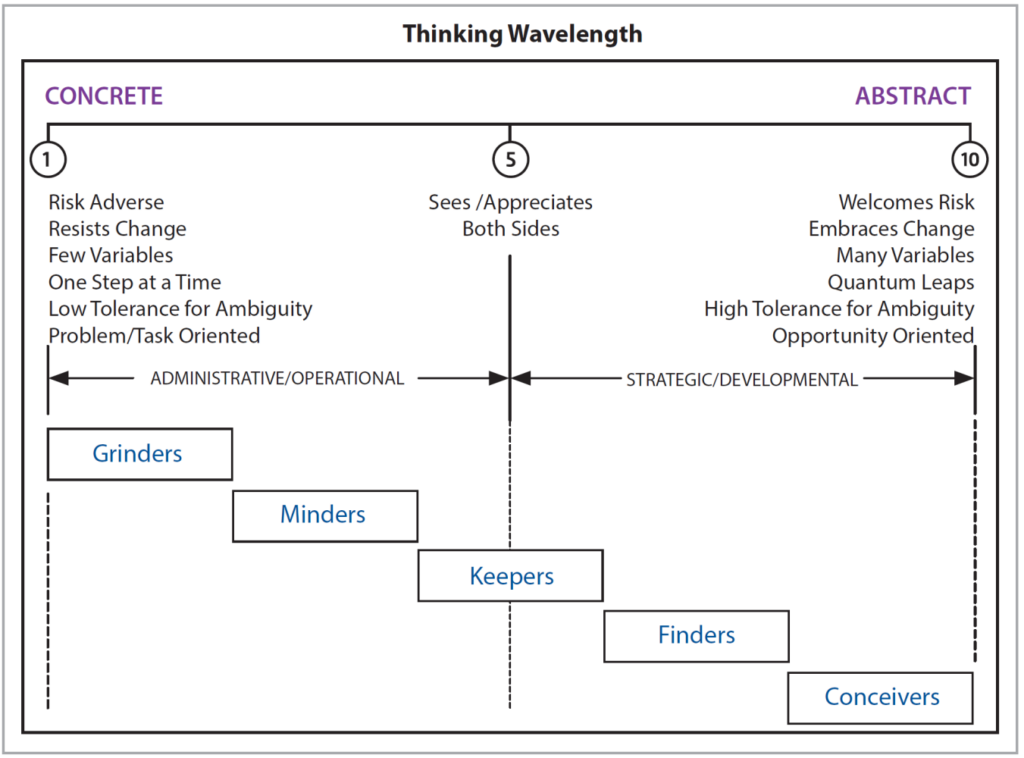
What is important to highlight is that most MSP owners fall into the higher range of the Keeper and lower range of the Finder types. What this means is that we are typically more welcoming of risk, we are able to innovate, see market opportunity, work with more ambiguity and juggle ideas in our head at one time.
These are great things for a small business, but have you ever noticed that you never seem to finish things? You don’t focus on developing initiatives and more on quickly? Your team can’t keep up and produce what you want? This is because you don’t understand how to manage these concepts and transition them to others.
This results in the following negative impacts to your business;
- You aren’t able to make time to work on the business because you are constantly resolving issues that you created
- Your people are feeling lost and unfulfilled because you don’t empower them to run with initiatives and finish them before you go on to the next
- You are stunting the growth of the business because you are selling different solutions to everyone and anyone because you see the potential larger scale opportunity
- You reduce your profitability because you “invest” in tools, systems services that you don’t fully engage in and implement properly
I see these time and time again, there is a reason that 5% of all businesses don’t scale past 5 employees and 2% above 20. We get caught in this vortex of being busy, the more resilient of us just suck it up and treat that as the life of the business owner, but we burn this into our identity and struggle to change after doing it for a decade or 2. We are burnt out because we are doing things that suck the energy out of us and we don’t know how to change from that.
You probably have tried to solve this by hiring others to compliment your strengths and make up for your weaknesses. What we are all looking for is someone to work closely with that can take our ideas and initiatives and implement them, some of us have gotten lucky and found that person by mistake, but most of us don’t know what we are actually looking for.
This is where the concept of the Visionary and Integrator from EOS is a really helpful guide to finding someone and starting to structure your business. Have a look at the image you see below, how well does this articulate who you are and what are you looking for?
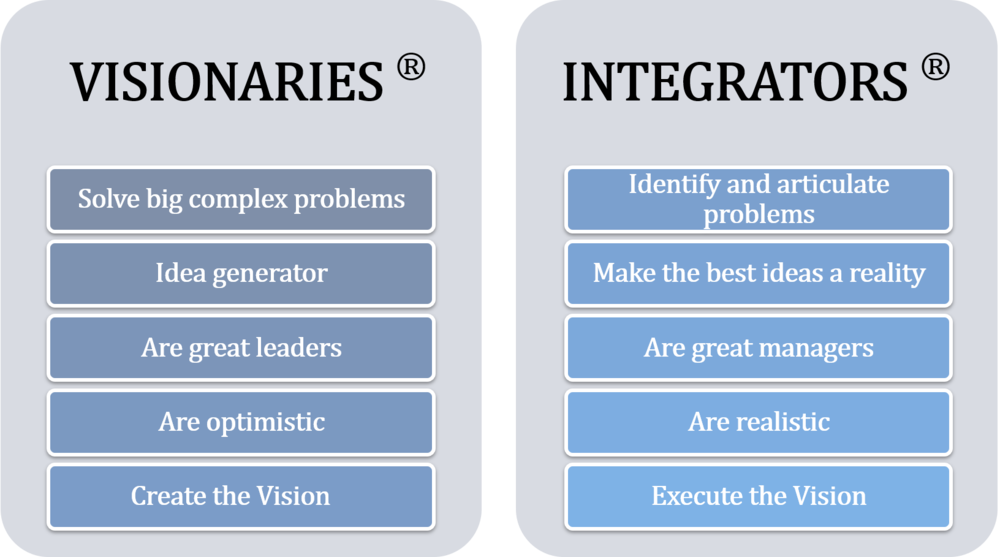
I have found that once we understand this concept we have much higher success rates in our business. It helps us shape our thoughts, find the right person to work with us closely and then put further structure into the business.
Once we find the right person, what do you need to do to make this working relationship truly successful? Well here are some thoughts and techniques to employ that are simple
- Implement a formal meeting rhythm with an agenda, allow your integrator to run this. In the EOS system it is called a same page meeting. You do this to stop bogging your integrator down in random conversations for all the random things you are thinking about.
- As a visionary you need to empower your integrator to say no to things, you need someone to stop you from focusing on the wrong things and diving into stupid ideas. Embrace the integrators natural grounding to reality that we don’t have.
- Work out a methodology so that you as the visionary can have the freedom to play with ideas that don’t affect the business. As an example Walt Disney used to jot down ideas on paper and put it into a drawer, his brother Roy would go riffling in the drawer to find the ideas and choose ones he saw as needed and would get Walt to share his vision so Roy could go implement them.
- Implement an annual strategic planning rhythm with facilitation to set out the objectives/vision for the year so you as a visionary can put together ideas and allow you and your integrator to agree to the objectives. From there you as the visionary can’t change the plan, unless something dramatic happens, but then you go back and replan together.
- Look at having a “mulligan” system where a certain amounts of times a year the visionary has the freedom to take resources and focuses to more deeply try out an initiative that could revolutionise the business. The amount should be dictated by financial and personnel resources available in the company so that we wont have any catastrophic consequences.
What you will find in rolling these kinds of things out is it will create a structure that will enable you do to do what you do best and doing things that create the most value for the business while energising yourself in the process.
It can be extremely freeing for both you, the integrator and the rest of your employees. The best success is often getting external help to get this all up and running and help you empower your people. I have seen too many times when we try to self implement and we don’t do it properly and revert back to old behaviour, having someone that can lead and direct you to make it work will create more sustainable results.
About the author
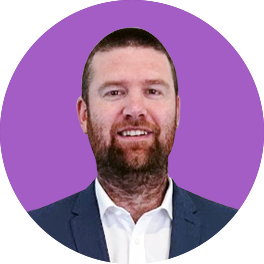
James Davis is the Director of Pax8 Academy Asia. Originally from Canberra, he recently moved as far south as he could to Hobart. He joined the Sea-Level family in 2020 to grow the Sea-Level Operations offering locally in the APAC Region, joining Pax8 in May 2022 to elevate the industry through education.
James is a coach that has over 16 years industry experience in owning and managing SMBs. His core purpose is “To create freedom from chaos from the lives of others so they can thrive and grow”.
He values personal development, always trying to learn something new to build his body of knowledge to grow as a person and leader. James tries to share his knowledge and experience as much as possible, believing in the go-giver mentality.
About Pax8
Pax8 simplifies the way organisations buy, sell, and manage cloud solutions. Join the cloud marketplace that unlocks a universe of possibility! Sign up here.
 Contact us
Contact us  Partner Login
Partner Login  Service Status
Service Status 
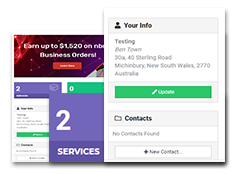
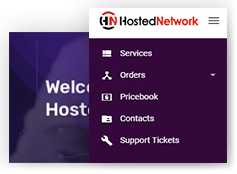
 November 15, 2023
November 15, 2023
 James Davis
James Davis
 3 mins
3 mins